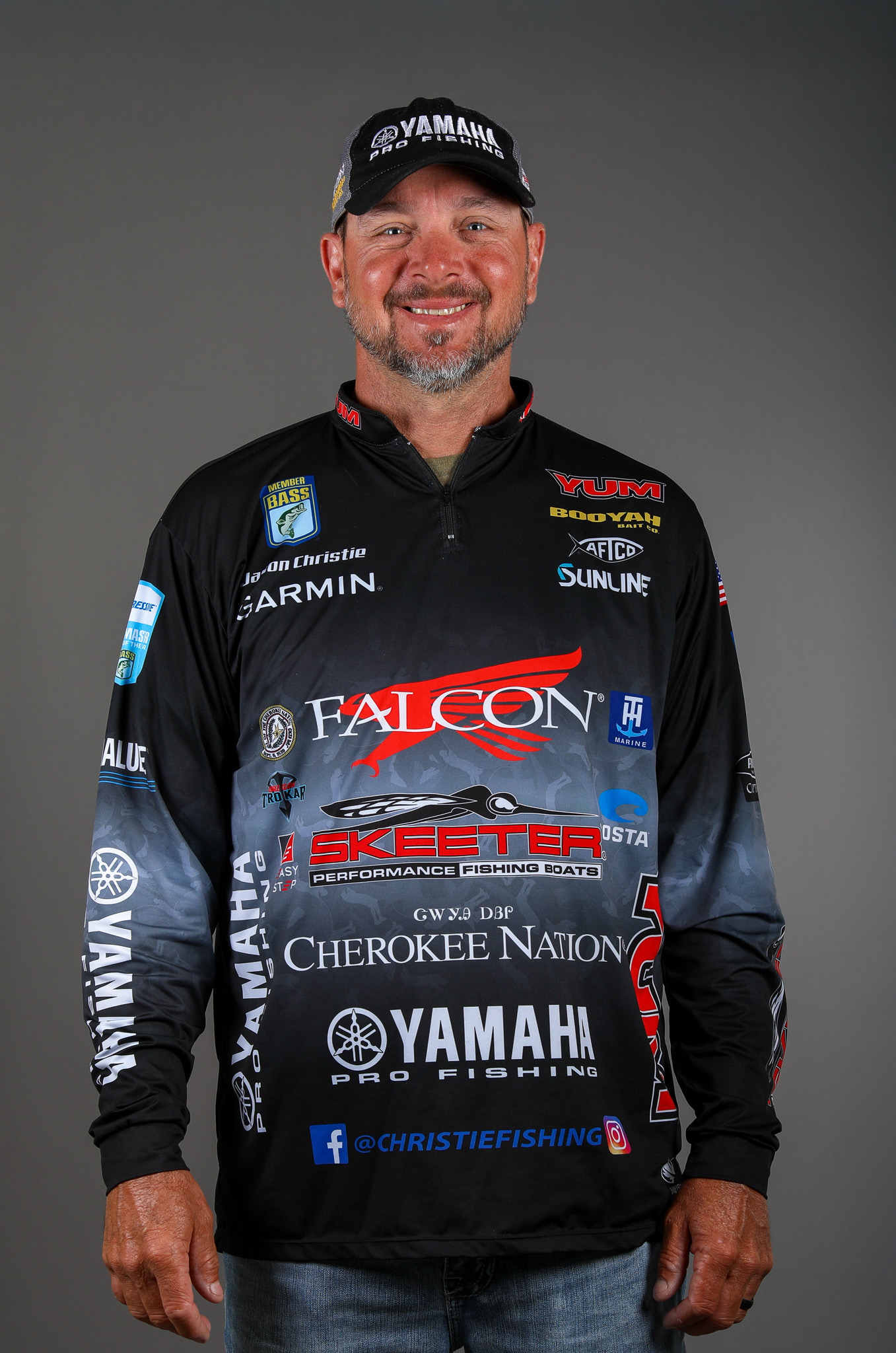Most anglers have their favorite summertime lures, from deep diving crankbaits to spoons and jigs. Well, make sure you add “big worms” to the list because nothing tempts those summer deepwater bass like a 10-inch soft plastic.
It’s the combination of a big profile and a subtle action. A lot of these fish this time of year are somewhat lethargic with the heat. Also, they’re pressured, so you want something subtle to attract their attention. I’ve found from experience that the profile of a big worm like a 10-inch Yum Ribbontail Worm or a 10 1/2-inch Yum Mighty Worm usually turns on those big fish.
Here’s a rundown of my main presentation styles for big worms.
Texas Rig
This is a good tactic for fishing brush, grass or any kind of standing structure because a Texas rigged worm comes through that stuff really well. This bait can also be effective for skipping under deep docks. A big Texas rigged worm is tough to flip into tight cover because of its length, but sending one way back under a dock gives the fish an irresistible look.
I use a 5/0 Trokar TK100 hook and vary my weight size from 3/8- to 5/8-ounce with wind and current. A 1/2-ounce is my most common size but I always use a tungsten weight.
For one thing, I’m fishing the worm on bottom so I want it to get down there quickly and make contact. Also, the tungsten allows me to feel brush, rocks and whatever’s on the bottom.
I particularly enjoy Texas rigging big worms on Oklahoma’s Grand Lake O’ The Cherokees because a lot of the productive deepwater ledges have brush on them. You can be fishing a ledge and not even know there’s any brush there until you feel it. With that big worm and tungsten sinker, you can feel your way through the thick stuff and catch whatever’s in there.
I use a Falcon 7-foot, 3-inch Jason Christie Signature Series rod with a 7:1 Lew’s BB1 Pro reel and 16-lb Sunline Sniper fluorocarbon. That higher reel speed is important because you’re moving the worm with your rod and a lot of your strikes come when your rod is at 12 o’clock. That extra reel speed lets you take up line fast and set the hook. Also, it helps you get the fish quickly out of the brush.
Carolina Rig
I use a Carolina rig when I want to cover broad areas rather than focus on a smaller spot like a brushpile. Carolina rigs are good in grass because the big worm floats above the weight where fish can see it.
I’ve had good success with a Carolina rig on Kentucky Lake, but I think that may be because of the numbers of Texas rigs those bass see during the summer. You know that if an angler’s not throwing a deep running crank, big spoon or a jig, he’s throwing a Texas rigged worm. Try a Carolina rig and you’re showing the fish something they haven’t seen.
I start with a 3/4-ounce tungsten barrel weight on my 20-pound Sunline Sniper main line and go with 24-30 inches of 15-pound monofilament leader tied to a 5/0 Trokar hook. Mono is the best choice for leaders because it floats and that’s what you want for a Carolina rig bait.
I fish this rig on a 7-foot, 6-inch Mike McClelland Falcon rod. A little more rod length is helpful because of the long sweeping hook set you’ll make. A Lew’s 7.1 reel also helps with the line pick up.
Jig head
Whether it’s a Booyah Pumpkin Head, a traditional football jig or one of the new swing head jigs, this presentation is a good one for fishing points, rocks or ledges. I particularly like the jighead option when I feel like I need a little finesse for pressured fish.
I like a 5/8- up to a 3/4-ounce jig and I fish this on the same outfit I use for Texas rigs. On lakes like Chickamauga, I’ve found that 90 percent of my bites come while I’m just dragging the bait. You throw it out, let it hit bottom and just start winding.
You want to hold your rod at 9 o’clock and reel as fast as you can while maintaining contact with the bottom. It’s okay if you lose contact for a second, but you’ll catch more fish by keeping the bait on the bottom as much as possible.
For any of my big worm presentations, I judge color selection by water color. In clear water, I go with green pumpkin and more translucent colors. In darker water, or under darker skies, I’ll use blue fleck or plum.
I really don’t think that with a big worm you’re trying to match a color to what they’re feeding on. You just want a color that shows up in 15 to 20 feet of water. The water at that depth is pretty dim and a lot of times you can get away with a darker worm than you might think.
Here’s a tip to close with: Put a rattle in those big worms. That little bit of noise just makes the bait a little more attractive at that depth. It’s an easy move that might get you a couple more bites.





